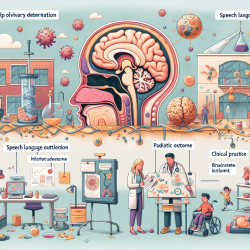Introduction
Adolescence is a critical period for mental health development, with many disorders first emerging during this time. A recent study titled "Evaluating the effectiveness of a school-based mental health literacy intervention from a comprehensive demographic and social-cognitive perspective" provides valuable insights into how school-based mental health literacy (MHL) interventions can be optimized for diverse student populations. This blog will explore the study's findings and offer practical advice for practitioners looking to enhance their skills and improve outcomes for students.
The Power of Mental Health Literacy in Schools
Mental health literacy is foundational for promoting mental health, preventing disorders, and facilitating care. School-based interventions have shown promise in improving knowledge and help-seeking behaviors among students. However, the effectiveness of these interventions can vary significantly based on demographic and social-cognitive factors such as gender, ethnicity, and English proficiency.
Key Findings from the Study
The study involved 240 Grade 9 students from diverse backgrounds in West Canada. It assessed the effectiveness of a mental health literacy intervention delivered by trained teachers over six months. Here are some of the key findings:
- The intervention improved knowledge and help-seeking attitudes among all students.
- Non-Chinese and native English-speaking students showed the most significant improvements.
- English proficiency was a significant predictor of knowledge acquisition.
- Ethnicity was more closely associated with changes in attitudes towards mental health.
- Gender influenced changes in stigma, stress, and wellbeing.
Implications for Practitioners
For practitioners working in multicultural and multilingual settings, these findings highlight the importance of considering both demographic and social-cognitive factors when designing and implementing MHL interventions. Here are some practical steps to enhance the effectiveness of such programs:
- Tailor Interventions: Customize interventions to account for students' English proficiency and cultural backgrounds. This may involve using simplified language or incorporating culturally relevant examples.
- Focus on Language Development: Support English language learners by integrating language development strategies into MHL programs. This can help improve knowledge acquisition and reduce stress associated with language barriers.
- Encourage Cultural Sensitivity: Educate teachers and staff about cultural differences in attitudes towards mental health. This can help create a more inclusive and supportive environment for all students.
- Monitor and Evaluate: Continuously assess the effectiveness of interventions and make data-driven adjustments to improve outcomes for diverse student populations.
Conclusion
The study underscores the importance of viewing mental health literacy interventions as learning processes that are influenced by both demographic and social-cognitive factors. By understanding and addressing these factors, practitioners can create more effective and inclusive programs that improve mental health outcomes for all students.
To read the original research paper, please follow this link: Evaluating the effectiveness of a school-based mental health literacy intervention from a comprehensive demographic and social-cognitive perspective.










